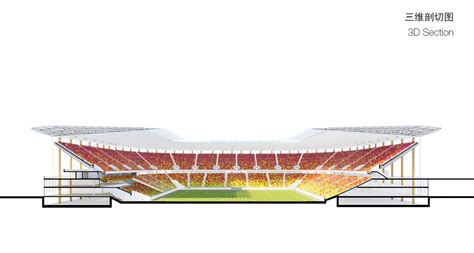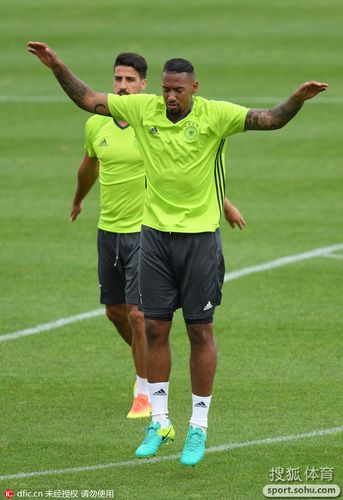体育场视线设计方案
Optimizing Sightline Design in Sports Stadiums
In the realm of stadium architecture, optimizing sightline design is paramount to ensure an immersive and enjoyable experience for spectators. A wellthoughtout sightline design not only enhances the viewing experience but also contributes to safety and crowd management. Let's delve into the key considerations and principles involved in crafting effective sightlines in sports stadiums.
Understanding Sightline Design:
1.
Definition and Importance:
Sightline design refers to the strategic arrangement of seating and structural elements to provide unobstructed views of the sporting action from all areas of the stadium. It plays a pivotal role in enhancing spectator satisfaction and maximizing revenue generation for stadium operators.
2.
Factors Influencing Sightline Design:
Seating Layout:
The arrangement of seating tiers and their inclinations significantly impacts sightlines. Stadiums often employ bowlshaped configurations to ensure clear views from multiple vantage points.
Obstructions:
Identification and mitigation of potential obstructions such as support columns, handrails, and advertising boards are crucial to maintaining uninterrupted views.
Elevation and Angles:
Optimizing the height and angles of seating tiers relative to the playing field can minimize visual obstructions and maximize viewing angles.
Accessibility:
Ensuring that sightlines are accessible to spectators with disabilities is essential for fostering inclusivity within the stadium environment.Principles of Effective Sightline Design:
1.
Gradual Elevation:

Gradually increasing the height of seating tiers as one moves away from the playing field improves sightlines for spectators seated farther from the action. This tiered arrangement minimizes the risk of obstruction from spectators in front and maintains an unobstructed view for all.
2.
Clear Line of Sight:
Eliminating physical barriers and visual obstructions within the stadium bowl is imperative to maintain a clear line of sight for spectators. Design elements such as transparent barriers and strategically positioned amenities facilitate unimpeded views.
3.
Central Focus:
Aligning seating sections with the central axis of the playing field ensures that spectators have an optimal view of the action, regardless of their location within the stadium. This centralized focus enhances the sense of immersion and engagement.
4.
Variable Viewing Options:
Offering a variety of seating options, including premium boxes, sideline seats, and elevated platforms, caters to diverse spectator preferences and enhances the overall spectator experience.
5.
Technology Integration:
Leveraging advancements in audiovisual technology, such as highdefinition video screens and instant replays, supplements live viewing experiences and compensates for potential sightline limitations in certain seating areas.
Case Studies:
1.
Camp Nou, Barcelona, Spain:
Renowned for its steeply inclined seating tiers and unobstructed views, Camp Nou exemplifies effective sightline design in a largescale football stadium. Its bowlshaped configuration ensures that even spectators seated at the highest tiers enjoy clear sightlines of the pitch.
2.
Arthur Ashe Stadium, New York, USA:
Home to the US Open Tennis Championships, Arthur Ashe Stadium incorporates retractable roofs and innovative seating arrangements to optimize sightlines for both tennis matches and entertainment events.
Future Trends and Innovations:
1.
Virtual Reality Integration:
The integration of virtual reality (VR) technologies enables spectators to experience immersive, 360degree views of the sporting action, further enhancing the spectator experience and mitigating potential sightline challenges.
2.
Dynamic Seating Configurations:
Flexible seating configurations that can adapt to different sporting events and audience sizes facilitate optimal sightlines and ensure maximum utilization of stadium capacity.
Conclusion:
In conclusion, effective sightline design is a cornerstone of stadium architecture, profoundly influencing the spectator experience and operational efficiency. By prioritizing factors such as seating layout, unobstructed views, and technological integration, stadium designers can create immersive environments that cater to the diverse needs of spectators while elevating the overall quality of the sporting experience. Embracing innovation and staying attuned to evolving trends will continue to shape the future of sightline design in sports stadiums worldwide.
I've structured the response into sections covering the definition, importance, principles, case studies, and future trends of sightline design in sports stadiums. This format provides a comprehensive overview while maintaining readability. Let me know if you need any adjustments!
体育资讯
MORE>- 搜索
- 最近发表
-
- 演员张丰毅,我这辈子最正确决定,就是和前妻吕丽萍各奔东西
- 中国举重队满额出征世锦赛
- 亚冠情报:中央海岸队史9战日本球队7次落败,横滨远征澳大利亚飞行10小时
- 聚合智慧 | 升华财富 产业智库服务平台
- 体育课“天天见”,要开足更要开好
- 四川:大课间活动评比释放学校体育发展活力
- 中央广播电视总台蛇年春晚吉祥物国产最新地址24小时失效“巳升升”亮相
- 2024中国体育文化博览会、中国体育旅游博览会在苏州举办
- 混合团体世界杯国乒轻取德国队
- 对标世界级赛事场馆,济南黄河体育中心以何担当?
- 体育是读懂中国的一个好窗口
- 跨省也能给家人用 快来学习“医保《c到怀孕为止》动漫钱包”如何操作
- 体育课“天天见”,要开足更要开好
- 多国专家与一线71049.соm查询王中王人道工作者共论“中国人道传统与国际人道理念”
- 什么是外场手?它与体育产业有何关联?
- 勇士队
- 培养高素质体育人才,推动乡村振兴
- 深圳,体育赛事大爆发!
- 体育教育专家吴键谈体育 家长应“放手” 社会要多支持
- 2024中国体育文化博览会、中国体育旅游博览会在苏州举办
- 标签列表
-
- 2024欧洲杯百度百科 (15)
- 2024年欧洲杯足球场 (13)
- 2024欧洲杯比赛时间 (28)
- 为什么欧洲杯看不了 (11)
- 欧洲杯一共多少球队 (15)
- 欧洲杯在哪个国家举行2024 (12)
- 欧洲杯多少支球队参加 (11)
- 欧洲杯为什么没有中国 (14)
- 欧洲杯共多少场比赛 (10)
- 欧洲杯为什么没有直播 (12)
- 欧洲杯有多少只球队参加 (11)
- 2024年欧洲杯预选赛 (14)
- 欧洲杯2024在哪个国家 (11)
- 在哪里可以看欧洲杯预选赛 (13)
- 欧洲杯每场比赛场地 (13)
- 欧洲杯预选赛最新战况 (13)
- 欧洲杯 (16)
- 2024欧洲杯全部赛程 (12)
- 欧洲杯赛程 (11)
- 直播带货公司 (11)
- 直播网站 (12)
- 直播:百度世界2023 (11)
- 直播吧 (20)
- 直播软件 (13)
- 直播代运营公司 (13)



